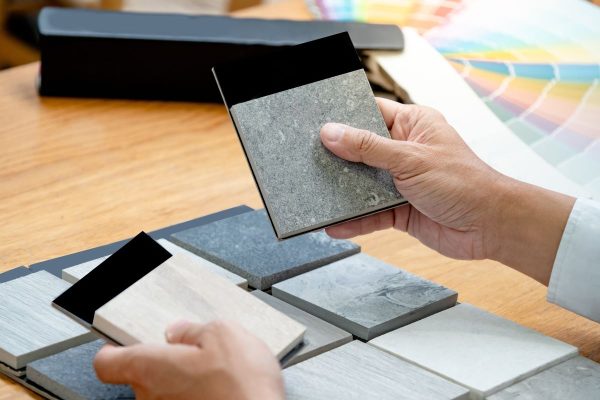
How to Clean your Tiles with White Vinegar
More and more people worldwide choose green items because of a growing global knowledge of environmental preservation, specifically regarding our homes. There is an increasing understanding that we may maintain the cleanliness of our houses by utilising natural DIY mosaic wall tiles solutions rather than using potent chemicals that may be damaging to the environment. And surprisingly, cleaning tiles with white vinegar is one popular DIY method that is also eco-friendly. Almost everything in your home, including tiled flooring, may be cleaned in an environmentally responsible manner with one common household item: white vinegar. Although white vinegar may not have the finest fragrance, it is a simple and inexpensive natural tile floor cleaner, and it can also make your tiles sparkle. Let’s look at how effective cleaning tiles with white vinegar is.
Can white vinegar solution be used to clean tiles?
White vinegar is often used as a cleaning solution. It is a preferred way to clean floor tiles because it is an acidic solution that effectively dissolves mineral deposits and grime that can accumulate on tiles over time. The acetic acid in white vinegar can break down, remove dirt and soap scum, and disinfect the surface due to its antimicrobial properties. White vinegar is a natural, non-toxic cleaning solution that is generally safe on most tile surfaces. It is also an affordable and easily accessible alternative to commercial cleaning products, which can be more expensive and potentially harmful to the environment. For these reasons, cleaning tiles with white vinegar solution is a popular choice because it is practical, safe, and affordable, making it an excellent option for commercial and residential use.
Does white vinegar damage tile or grout?
While white vinegar is a popular and effective cleaning solution for tiles, it can damage certain tiles and grout if used improperly or frequently. White vinegar is an acidic solution that can etch or corrode some tiles, particularly those made from natural stone or unglazed ceramic. The acid in white vinegar can also weaken and deteriorate certain grouts over time, particularly if the grout is already damaged or in poor condition. It is essential to dilute the white vinegar with water and avoid using it on surfaces susceptible to acidic solutions to minimise the risk of damage. Testing the solution on a small, inconspicuous area before using it on a larger surface is also a good idea. Cleaning outdoor tiles with white vinegar occasionally should not cause significant damage, but frequent or improper use can potentially lead to issues with the tile or grout. If you are still determining whether white vinegar is safe for your specific tile or grout, it is always best to consult a professional cleaner or tile expert.

How long should white vinegar sit on tiles?
The time that white vinegar should sit on the tile before cleaning depends on the severity of the stains or buildup you are trying to remove. In general, it is recommended to let the white vinegar solution sit for at least five to ten minutes to penetrate and dissolve any dirt, grime, or soap scum on the tile surface. However, it is essential not to let the white vinegar solution sit on the tile for too long, especially if you are cleaning natural stone tiles or unglazed ceramic tiles, as prolonged exposure to acidic solutions can potentially damage the surface. Once the white vinegar solution has been applied, use a soft-bristled brush or a sponge to scrub the surface, paying extra attention to any areas with stubborn stains or buildup. Then, rinse the tile thoroughly with clean water to remove any remaining white vinegar residue. After cleaning, it is a good idea to dry the tile with a clean towel or cloth to prevent water spots or streaks from forming.
How much white white vinegar do I use to clean tiles?
The amount of white white vinegar you should use to clean tiles depends on the size of the area you are cleaning and the severity of the stains or buildup you are trying to remove. Generally, a 50/50 mixture of white white vinegar and water is a good starting point for cleaning most tile surfaces. Mix equal parts of white white vinegar and water in a spray bottle or a bucket to make a white vinegar-cleaning solution. If the stains or buildup on the tiles are particularly stubborn, you can increase the concentration of white vinegar by using more white vinegar and less water. However, be careful not to use too much white vinegar, especially when cleaning natural stone tiles or unglazed ceramic tiles, as excessive exposure to acidic solutions can potentially damage the surface. Once you have mixed the white vinegar and water, apply the solution to the tile surface and allow it to sit for at least five to ten minutes. Then, use a soft-bristled brush or a sponge to scrub the surface, paying extra attention to areas with stubborn stains or buildup. Finally, rinse the tile thoroughly with clean water to remove any remaining white vinegar residue. Always test the white vinegar solution on a small, inconspicuous area before cleaning the entire surface and follow the manufacturer’s recommendations for cleaning and maintaining your specific tile – like marble effect tiles.
Conclusion
Tiles, let’s face it, quickly become soiled and dingy. White vinegar is the ideal eco-friendly cleanser for porcelain, ceramic, or patterned bathroom floor tiles – even on the kitchen. Why? First and foremost, it is safe to use around children and pets. Knowing how to clean floor tiles with white vinegar also saves you money and time trying to look for someone to do it for you. Although it has a distinct fragrance, it is not overpowering or dangerous and goes away relatively soon with some good airing. Additionally, white vinegar safely cleans most hard surfaces, removes oil and hard water stains, and disinfects most hard surfaces. The finest part about cleaning tiles with white vinegar is that it dries, leaving a clean, unobtrusive aroma behind.





